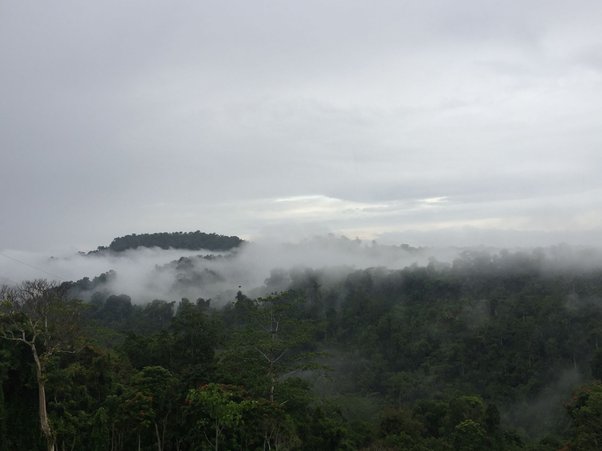Just like the trade in conflict diamonds, the trade in conflict timber can create havoc. Illegal logging has generated vast revenue that has fuelled conflict across the continents of Africa, Asia and Latin America.
A recent Interpol-United Nations Environment Programme (UNEP) report on the scale of global environmental crime ranked illegal logging as the largest environmental crime by value - forestry crimes including corporate crimes and illegal logging account for an estimated US$51–152 billion annually.
It also points to the role of natural resource exploitation in the financing of conflict and terrorism. UNEP has estimated that at least 40% of all intra-state conflicts have a funding link to natural sources.
In addition to the impact on security and human rights, such conflicts can carry grave human, environmental and social consequences and bring emerging nations to the brink of ruin.
The European Union (EU) is a significant export market for tropical timber. Its flagship scheme to improve forest governance, the Forest Law Enforcement, Governance and Trade (FLEGT) Action Plan, aims to regulate and reduce the global trade in illegal timber, and provides the potential to combat conflict timber.
In 2004, the plan saw the creation of Voluntary Partnership Agreements (VPAs) which are bilateral agreements between the EU and timber-producing countries outside the EU.
FLEGT and the VPAs give the EU an influential role in some conflict-prone producer countries where weak governance makes their timber sector vulnerable to profiteering by state-backed and non-state armed groups.
Alongside FLEGT sits the EU Timber Regulation (EUTR), which bans the placing of illegally harvested timber and derived products on the EU market.
It requires companies to conduct due diligence to minimise the risk that their products are illegal. Member states have all now appointed Competent Authorities who are responsible for the application and enforcement of the regulation.
But two evaluations published in 2016 on FLEGT and EUTR highlight respectively a lack of EU action in countering conflict timber and weaknesses with the enforcement of the EU Timber Regulation.
The FLEGT evaluation recommends maintaining an “action area” on conflict timber stating “conflict timber remains a relevant issue to deal with opportunely, proactively and once there is a conflict situation,” but the document stops short of recommending how the EU should implement this.
Other EU policies also have their limitations including the imposition of sanctions. International sanctions on timber imports from conflict areas, like those imposed by the UN on Liberia, can play a critical role in stemming conflict and human rights abuses.
But a sanctions regime can be inconsistent in its implementation and monitoring. Once one resource is targeted through sanctions, combatants’ war-chests can be replenished from other equally valuable resources.
Sanctions take considerable time to put in place as multiple nations need to debate, agree and sign up. Many conflict casualties could be averted with a swifter response.
A more flexible approach is needed and one that goes beyond sanctions. The EU can draw on other initiatives like the Kimberley Process that seeks to stop the flow of conflict diamonds, and the Extractive Industries Transparency Initiative aimed at improving governance of the oil, gas and minerals sectors.
Whilst each has their own limitations, their provisions for the suspension of a member/participating country where conflict breaks out, underline the need for the EU to consider such moves under similar conditions of the bilateral agreements, VPAs, signed with timber producing countries.
The trade policy of the European Commission sets out a vision of its trade policy based on the respect of human rights and the social and environmental aspects in supply chains. But if it is to deliver on this, it can’t afford to ignore the risk of its timber trade funding bloodshed and instability in timber producing countries.
As EU policy makers consider the conclusions of the latest FLEGT review, this Global Witness briefing argues that the EU has to develop a comprehensive framework under the FLEGT Action Plan to deal with the problem of conflict timber.
It should begin by drawing up a definition of “conflict timber” and incorporate the best policy practices of other organisations. It should tackle both the supply of, and the demand for timber at risk of association with conflict.
It needs to be flexible and swift in its response and implementation, and should not only react to conflict situations but also help to prevent entrenched armed violence fuelled by the ill-gotten gains of the world’s illegal timber trade.
This work should form a central part of ongoing and future FLEGT implementation.
Key recommendations
- All FLEGT programmes should be conflict sensitive and address the risk of conflict timber, address conflict over land tenure, integrate conflict prevention and appropriate post-conflict measures.
- Conflict timber should be addressed in all VPAs, including those under negotiation or in the implementation phase.
- Strategies countering conflict timber should not be dependent on United Nations or EU sanctions and should allow for action to be taken in an early stage of a conflict.
- The EU should move swiftly in suspending VPAs where necessary due to outbreaks of conflict.
- The EU Timber Regulation should be better enforced in relation to timber coming from countries with risk of conflict.
Read the full briefing: Conflict timber - a new framework for action
Download Resource

